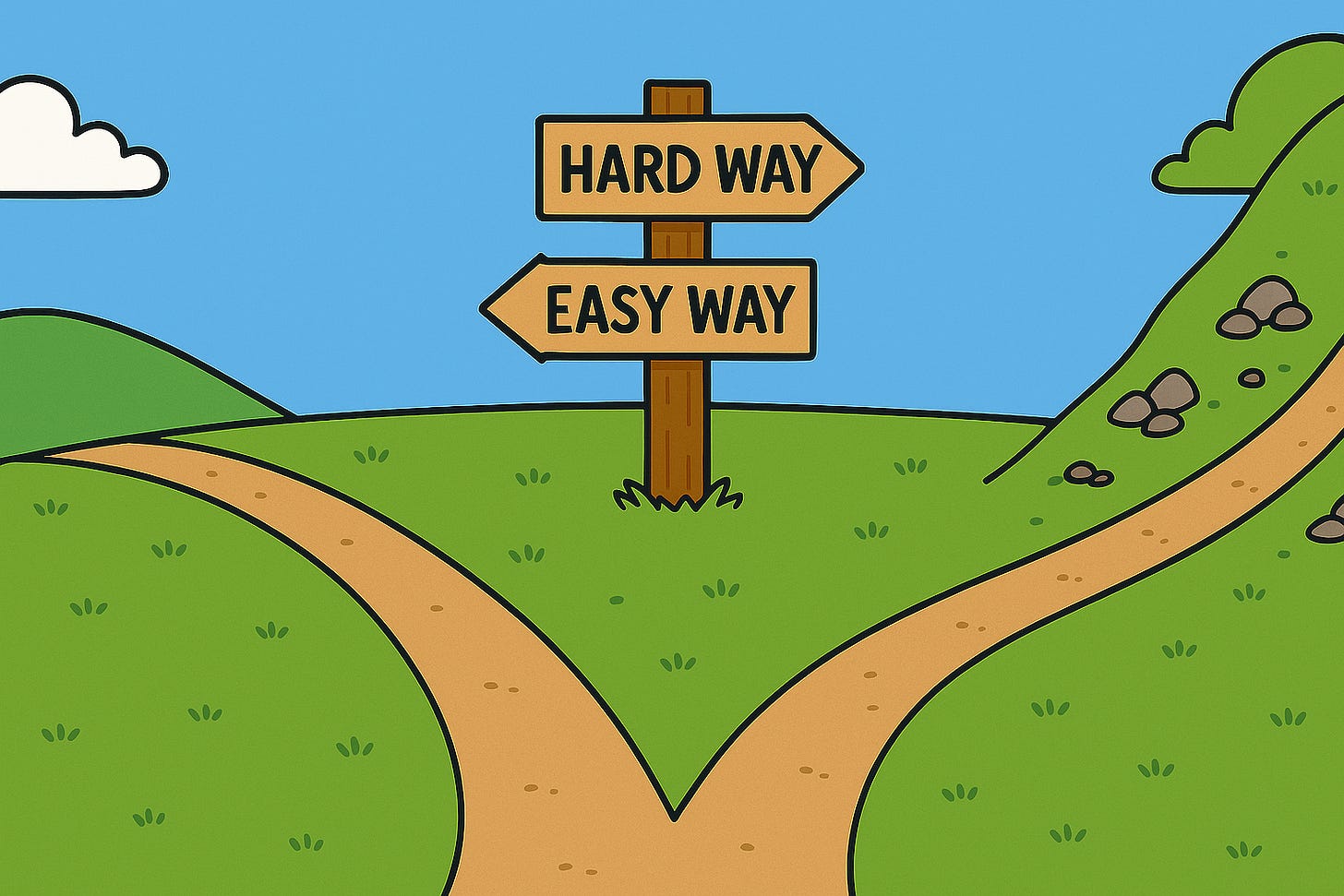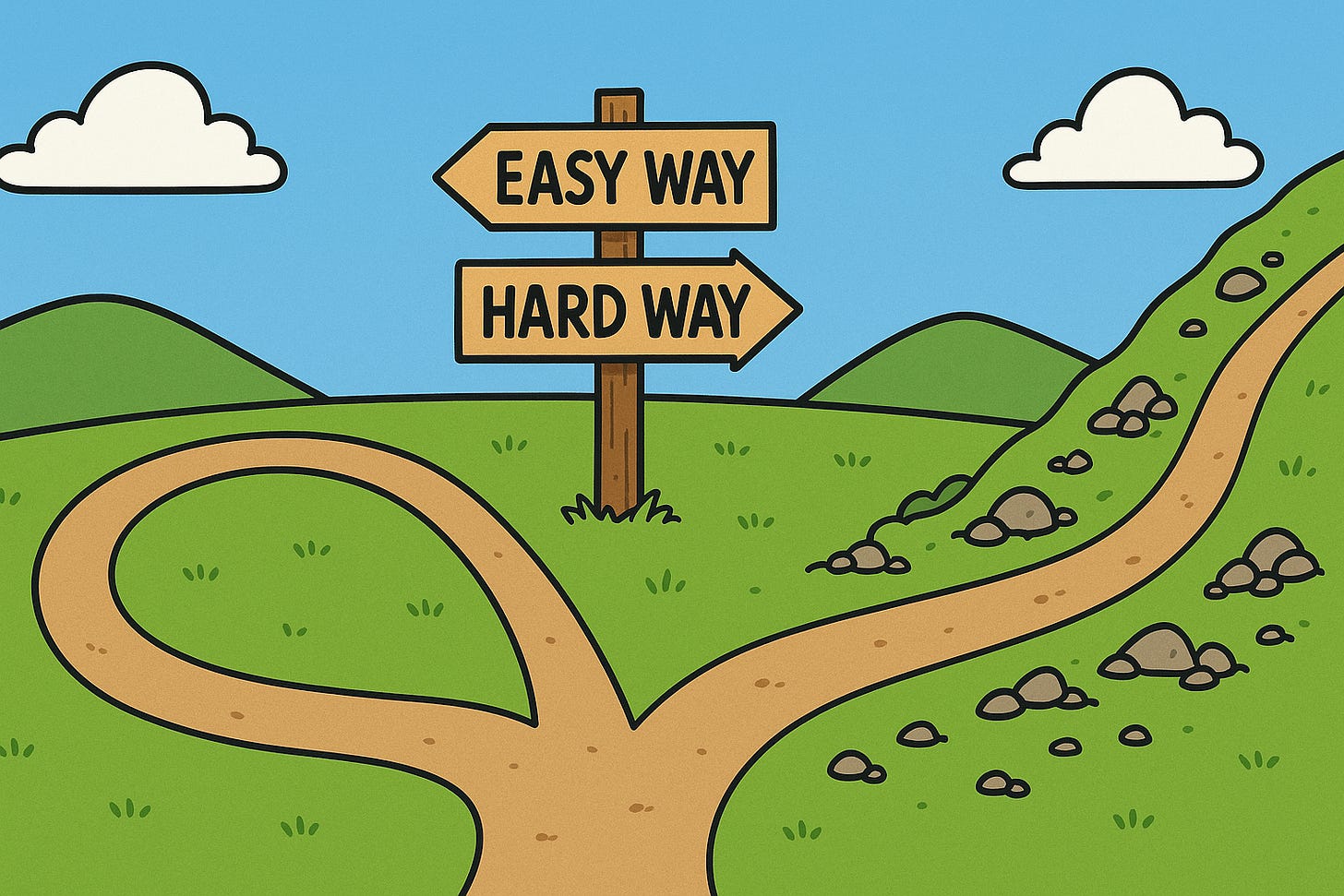The Easy Way vs The Hard Way in AI
The Easy Way is quick, but rarely works in practice
There’s a lot of hype about how fast you can now build AI systems. To some extent, this is true. Engineers can now build an end-to-end system in days, as large models like GPT can perform a range of tasks, such as extracting data from PDFs and replying to emails, without specific training. Engineers can build by themselves, ignore the data & treat it like a software engineering problem. We call this The Easy Way.
Unfortunately, this often doesn’t produce AI that’s reliable enough to be useful. If not, the engineer has to build AI The Hard Way. This involves working closely with a domain expert and paying careful attention to data to improve the accuracy of the AI. As the name suggests, it’s not possible to bring something to market so quickly with this approach.
This post covers both approaches and when to use them. While you should usually start with the Easy Way, most AI systems still need to be built The Hard Way.
The Easy Way - Ignore the Data
The easy way is to treat building an AI system like a standard software system. You can quickly plug the OpenAI API into your pipeline, and assume that it’s going to reliably produce the outputs you want. After all, standard software functions give reliable outputs. After sense-checking the system gives reasonable-looking outputs, you can launch. You can often get your AI system built this way in a matter of days.
We often recommend starting with The Easy Way because it’s so quick. Unless you have a strong prior about accuracy (e.g. from risk appetite), it may be good enough for your customers to start and continue to use the AI system. Some examples of AI projects that can be built this way are chatbots for your website that can be tailored to your business, and AI to write content in bulk to boost SEO ratings.
Unfortunately, there aren’t that many examples of successful AI products like this. The common thread is that they’re very similar to using ChatGPT. So if ChatGPT is good enough, The Easy Way may work. That’s because OpenAI has already done the hard work of assembling the dataset, on which ChatGPT is trained, for you. Out of the 20+ commercial AI projects we’ve built, this only worked once. While The Easy Way quickly feels promising, the reality is usually that there’s still a long way to go.
How do you know if The Easy Way is not good enough? You may find the AI’s output isn’t reliable enough, and you keep tweaking the prompt to make it better. However, this leads to new problems, and you feel like you’re playing a game of whack-a-mole. If you find yourself here, you have to move onto The Hard Way.
The Hard Way
The Hard Way involves:
Breaking the task down into AI and non-AI parts to simplify the task for AI
Writing Policy and labelling data to set up evaluation for your AI system
Iterating on your AI until it’s accurate enough to launch
After launching, ongoing monitoring of performance in production
The Hard Way takes much more time and work. In particular, the second step of writing Policy, labelling data and setting up evaluation requires both domain expertise and technical skills. It’s very unlikely an AI engineer can do this by themselves. Instead, engineers need to collaborate closely with domain experts to write Policy and build an evaluation dataset.
This can’t be neatly explained in a few paragraphs. After all, it’s The Hard Way. However, we’ve written about it more fully in How To Build AI That Actually Works.
The Hard Way takes time, effort and iteration. The juice has to be worth the squeeze, so the AI project needs real RoI. Before embarking on The Hard Way, take some time to ensure that’s the case. A bonus is that the dataset you build will be proprietary - no one can reverse engineer it by just looking at your product. This gives you differentiation and defensibility against competitors.
Wrapping Up
We usually recommend starting with The Easy Way, which means ignoring data and treating AI like a software engineering problem. If the AI output is good enough, you can build an end-to-end system in days. You’ll learn whether that’s the case when you launch. However if it’s not good enough, and you find yourself playing whack-a-mole, you need to move on to The Hard Way.
The Hard Way involves treating AI as a data problem, not just a software problem. It requires collaboration between an AI engineer and a domain expert to write Policy and build a labelled dataset. This takes time, effort and iteration - you’re looking at weeks or months, rather than days. However, the end product is an AI system that actually works.
An added bonus: because it was hard to build, it’s hard to copy. If you succeed in building The Hard Way, you’ll create an asset that’s both useful AND defensible against competitors.





Great points. Especially around ensuring your confident of some ROI before embarking on the hard way!